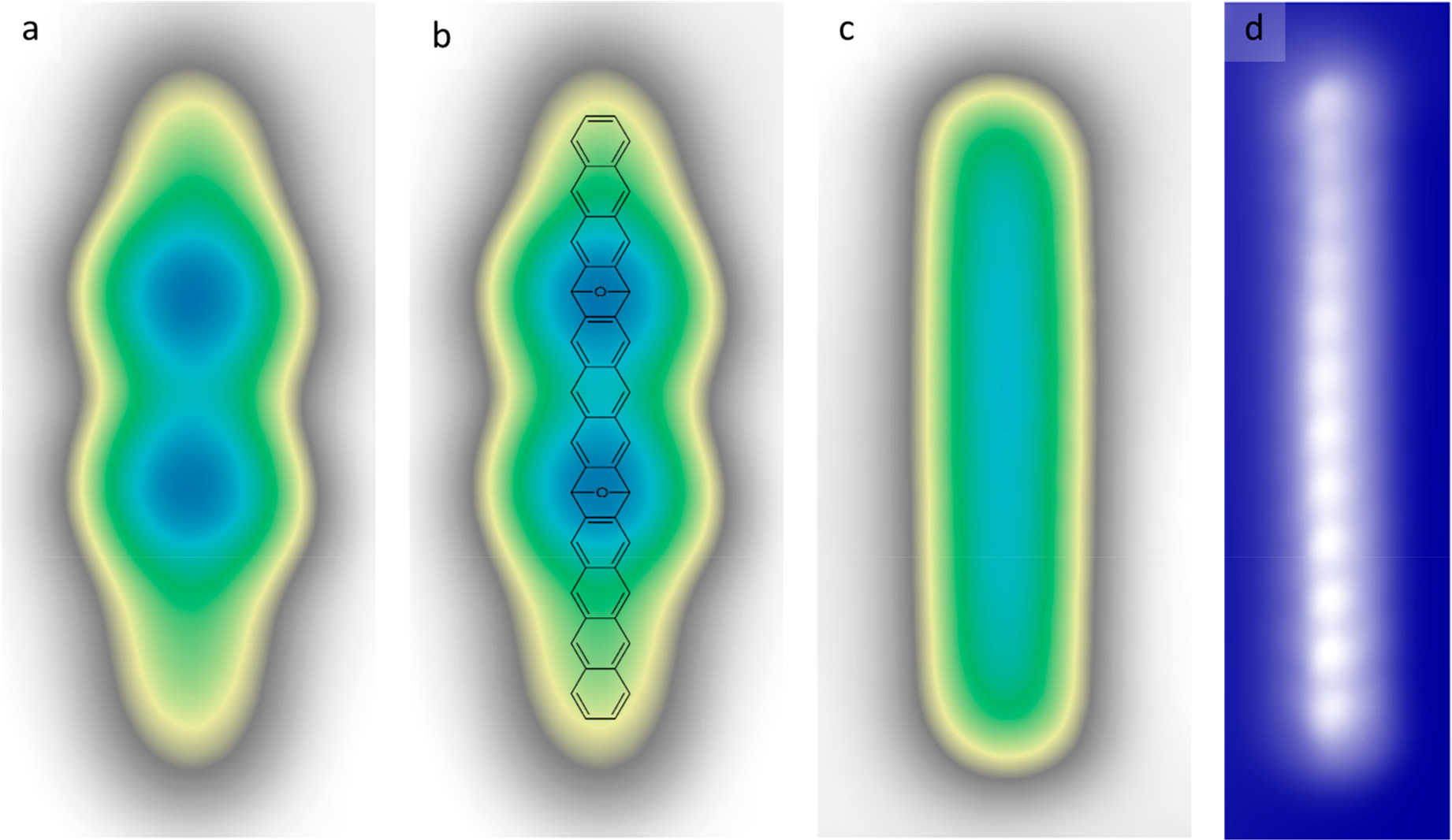The acene series represents a model system to investigate the intriguing electronic properties of extended π-electron structures in the one-dimensional limit, which are important for applications in electronics and spintronics and for the fundamental understanding of electronic transport. Here, we present the on-surface generation of the longest acene obtained so far: dodecacene. Scanning tunneling spectroscopy gives access to the energy position and spatial distribution of its electronic states on the Au(111) surface. We observe that, after a progressive closing of the gap and a stabilization to about 1 eV at the length of decacene and undecacene, the energy gap of dodecacene unexpectedly increases to 1.4 eV. Considering the acene series as an exemplary general case, we discuss the evolution with length of the single tunneling resonances in comparison with ionization energy, electronic affinity, and optical gap.

The acene series represents a model system to investigate the intriguing electronic properties of extended π-electron structures in the one-dimensional limit, which are important for applications in electronics and spintronics and for the fundamental understanding of electronic transport. Here, we present the on-surface generation of the longest acene obtained so far: dodecacene. Scanning tunneling spectroscopy gives access to the energy position and spatial distribution of its electronic states on the Au(111) surface. We observe that, after a progressive closing of the gap and a stabilization to about 1 eV at the length of decacene and undecacene, the energy gap of dodecacene unexpectedly increases to 1.4 eV. Considering the acene series as an exemplary general case, we discuss the evolution with length of the single tunneling resonances in comparison with ionization energy, electronic affinity, and optical gap.
